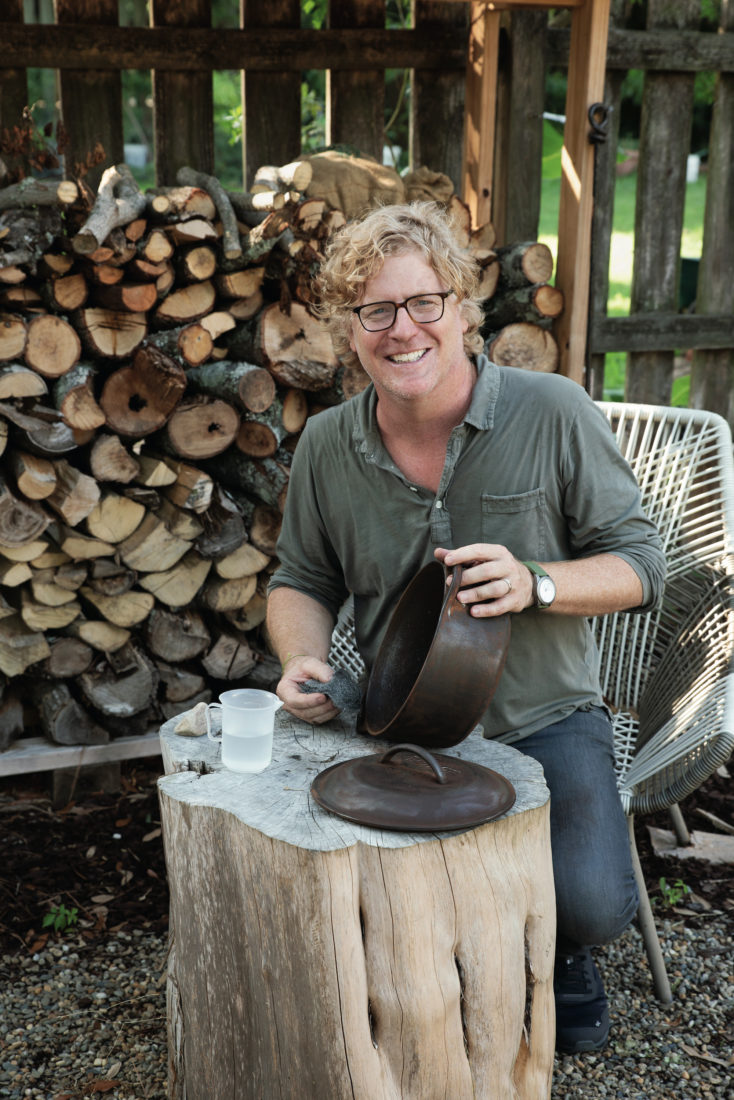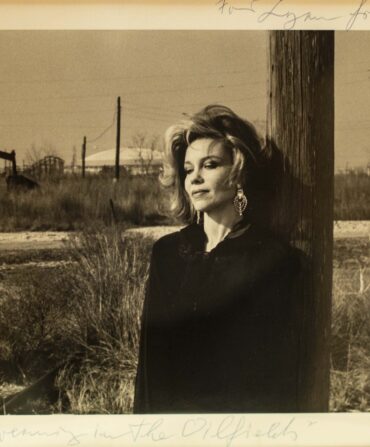I did not grow up in a family with a collection of cast-iron pots and pans. I purchased my first piece, a twelve-inch Lodge skillet, during my stint in New York City with my now wife at a hardware store at Ninety-Seventh Street and Broadway. I had come home from an offshore fishing trip with a haul of yellowfin tuna, and Jenny, as always, knew exactly how we should cook it. (Rub the tuna with cumin, coriander, cayenne, salt, and pepper. Drop it in a smoking hot skillet for a quick sear. Serve in chunks in taco shells with avocado salsa.) That was seventeen years ago, and that skillet still rests atop our stove—having handled everything from buttermilk biscuits to venison burgers.
Though we’ve since added to our collection, I’d been thinking about getting a workhorse Dutch oven after I watched a friend use one to make a simple but delicious blueberry cobbler on a bed of coals this past winter. So recently when I saw a very rusty five-quart Lodge version tucked away in the corner of my older brother’s horse barn, I made a play for it.
My brother and his wife had salvaged it from her grandparents’ house on the Okatee River in South Carolina before the property was sold. By the family’s best recollection, the Dutch oven was put into service during winter oyster roasts on an open fire for side dishes such as gumbo. After giving it one last look, my brother, a cast-iron convert who had once given each of his five kids skillets he had restored for Christmas, said simply, “Knock yourself out.”
No doubt I had my work cut out for me. When I lifted the lid, there was a lone songbird feather attached to a morass of spiderwebs. The interior had the most rust, with some flakes and heavy pitting on the bottom. This would never be a collectible, but in the argot of the cast-iron crowd, it could still be a “user.” I started with a white vinegar and water spritz, and then went to work with some steel wool. But soon I realized it needed a full soak for a few hours. Then back at it with the steel wool. And a longer soak. Eventually, on the advice of a friend, I purchased a wire cup brush that fit on the end of my hand drill, and the real progress began. (Bonus tip: If you have an old cast-iron hand-me-down that has seen better days but don’t have the time to coat yourself in rust dust, Smithey Ironware in Charleston, South Carolina, will restore it for you.)
As I write this, the Dutch oven is just about ready for some fine buffing and then the seasoning process. It might seem silly to assign such weight to an iron pot, but as I ground through its layers of use and disuse, I often wondered what stories that vessel could tell, from the family recipes it served to those joyous times around the winter firepit. And I imagined what stories it will be a part of as my family makes it our own.
Follow David DiBenedetto on Instagram and Twitter at @davedibenedetto.









